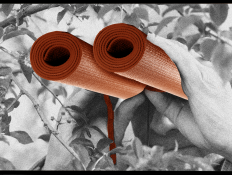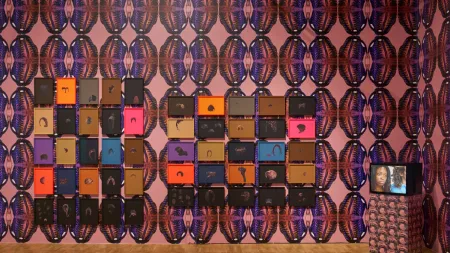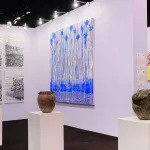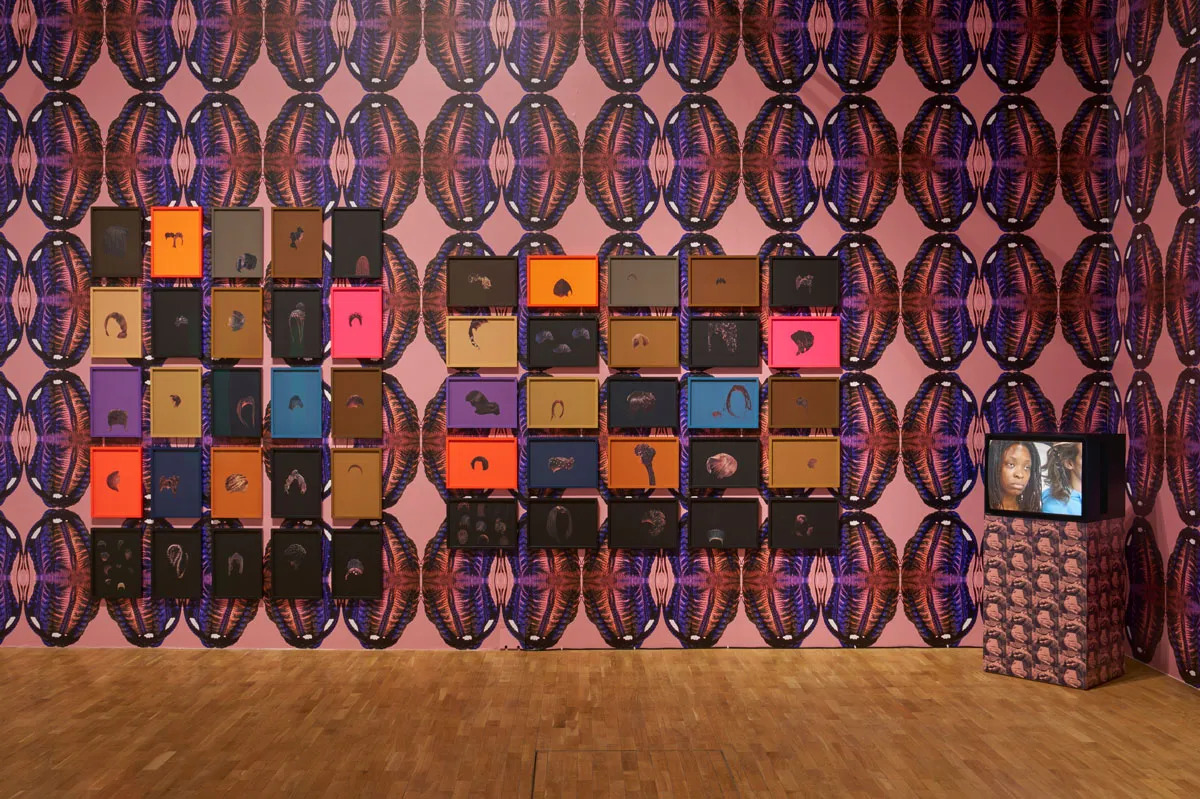
For its fall programming, London’s Whitechapel Gallery decided to present an intriguing pairing of exhibitions of two artists who at first may seem an unlikely duo: Sonia Boyce and Lygia Clark. But their work, this double bill of shows argues, shares compelling synergies such as an emphasison touch and play. Moreover, both artists shifted from making object-based art to focusing on participatory practice during their careers. The relational grounding of both their practices is even conveyed in the exhibition titles “An Awkward Relation,” for Boyce, and “The I and the You,” for Clark, who is receiving her first museum survey in the UK.
“Something that permeates both Sonia’s and Lygia’s work is this idea of how you connect and dissolve the line between the art object and the audience, how you invite audiences to play, and to break what have become the established rules of the museum and gallery,” said Whitechapel director Gilane Tawadros, who cocurated the exhibitions with Boyce and Anglo-Brazilian scholar Michael Asbury. “Play is a very serious business because in playing we are often exploring the boundaries between each other.”
Signs throughout the two exhibitions encourage visitors to “touch and explore these sculptures,” making a refreshing change from the reverential behavior demanded by most art institutions that is often divorced from the artists’ intentions. Visitors can handle, for example, replicas of Clark’s origami-like metal-hinged Bichos (Critters) from the 1960s (several originals are on view in nearby vitrines for their protection), or try out an array of her tactile objects using everyday materials designed to stimulate an awareness of the body. These include goggles with reversible lenses, materials with instructions for making a paper Mobius strip, and an air-filled bag with a pebble on top that evokes a lung when compressed and expanded. Equally, Boyce’s 1993 installation Hair Objects invites visitors to break social taboos and touch dreadlocks and plaits made from both synthetic and real hair.

In the mid-’90s, Tawadros, noticing affinities between their practices, introduced Boyce to the work of the late Brazilian Neo-Concrete artist. It was at a 1996 Whitechapel group show, “Inside the Visible,” that she first encountered Clark’s interactive art objects. Clark has remained a touchstone for Boyce ever since. “I’m often anchored in that 1980s moment and the early drawings that I made [then],” Boyce, who was a core member of the British black arts movement in those years, told ARTnews. “I did those drawings for three years, and I’ve been practicing for over 40 [years since].”
When Tawadros arrived at Whitechapel in 2022, Boyce was among the first people she called, inviting her to cocurate a Boyce-Clark double header. Boyce’s exhibition deliberately eschews the identitarian early works with which she is often associated, like her pastel drawing Lay back, Keep Quiet and Think of What Made Britain so Great (1986), featuring a young, self-aware Boyce who looks out at the viewer and is set against a backdrop of William Morris–style wallpaper juxtaposed with caricatures of imperialist propaganda posters. Instead, this presentation emphasizes the breadth of her practice and international scope of her influences, Clark among them.
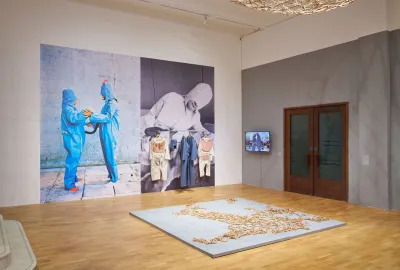
“The moment that I picked up the objects, I entered this other realm, one very similar to when you’re a child and if you pick up a hairbrush, it becomes a microphone,” Boyce recalled of the earlier Whitechapel show. “Somehow, by picking up these seemingly mundane, inert objects, it just sent me into this inner world.”
Clark’s show re-creates that sense of wonder through play. Spread over Whitechapel’s downstairs galleries, it charts the trajectory of her career from the mid-1950s, when she made architectural sketches and maquettes inspired by Constructivism, moving through her stark geometric explorations of line and plane in paint, which ultimately expanded into three-dimensional space with her “Bichos,” conceived almost as living organisms that changed form of their own will. Clark embraced a multi-sensory, embodied approach to art making, and her interactive sculptures mark her transition to tactile “relational objects,” employing increasingly natural and ephemeral materials like stones and paper. Amid the heady revolutionary fervor of 1968, she moved to Paris and taught at the Sorbonne, where she held experimental workshops involving participatory action; she returned to Brazil in 1976.
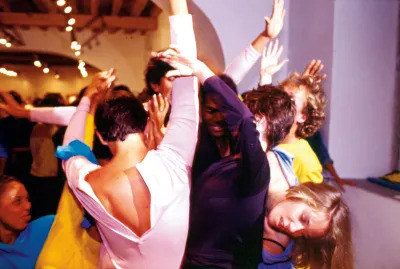
One of the joys of Clark’s exhibition is the presence of performers in the gallery that periodically reactivate two of her participatory propositions. In Corpo Colectivo (1970), participants in bright jumpsuits, who are sewn together, writhe and contort in a colorful conjoined mass as they navigate their collective connectedness, while Elastic Net (1974) involves a vast web made from elastic bands in which participants bounce around, pushing and pulling with their bodies as they test the contraption’s limits.
“The works speak to each other,” said cocurator Asbury. “You can see relationships between the wall pieces and the Bichos, and how the Bichos resist your movement sometimes and in the Corpo Colectivo the performers are also restricted. There is a parallel between the more mechanical movement in the Bichos and the organic movement in the performance.”
Visitors are invited to throw off their inhibitions and re-create the works by putting on costumes and elastic bands. The boldest can even try out the titular work O eu e o tu (The I and the You), from 1967, in which two people don masks and full industrial rubber suits connected by an umbilical tube. The aim is an intimate sensory exploration of each other’s bodies, dissolving boundaries between material and skin as the participants feel their way inside each other’s inner pockets which are kitted out with textures such as straw, foam, bristles and bulging shapes.
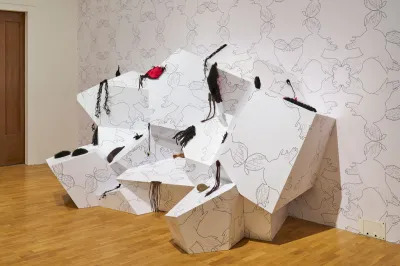
Upstairs, Boyce’s sparser exhibition spans sculptures, photography, collages, wallpapers, and videos, where the parallels with Clark’s work below echo throughout. Boyce’s wallpaper depicting clapping hands, for example, covers a geometric plinth-cum-sculpture displaying several objects made from hair; the pose of the hands in Boyce’s photographs recall those imaged in Clark’s 1968 Diálogo de Mãos (Hand dialogue), showing hands interacting with an elastic Mobius strip. Similarly, Boyce’s 2006 video Exquisite Tension featuring a Black woman and white man having their hair braided together speaks to the collective experience that is the focus of Clark’s Corpo Colectivo. At Whitechapel, the video is juxtaposed against a vibrant backdrop of braided hair wallpaper alongside 50 collages from the 1995 series “Black Female Hairstyles.”
The final two rooms are given over to Boyce’s seven-channel multimedia installation We Move in Her Way (2017), documenting a live performance in which professional dancers and audience members interacted with each other and with diverse objects to create together an open-ended work.Partly inspired by Clark’s experimental laboratories and by the Dadaist Sophie Taeuber-Arp (audience members wear masks loosely based on her 1920 sculpture Dada Head), the work illustrates Boyce’s longstanding engagement with modernism. In the original performance, Boyce said, the initially tentative audience participants became so engrossed in the collective action that they stayed on even after the performers and crew went home.
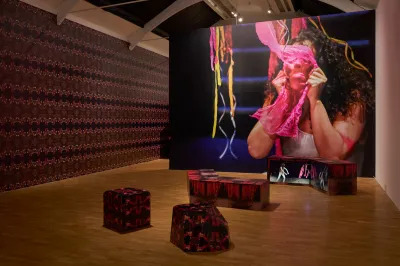
“One of the things I felt got released in that moment was that as adults we don’t get to play, and actually we’re desperate to play, and play in very undetermined ways,” she said. While the installation is in keeping with the experimental spirit of the two shows, inevitably much of the vitality of the original collective action is lost in its video documentation—you wish you had been there. But, the most dynamic aspect of Boyce’s presentation is her kaleidoscopic wallpapers made from abstracting and repeating figurative elements—performers, braided hair, hands—until they take on a sensual, bodily dimension, resembling gaping jaws or vaginas. Like Clark’s “Bichos,” some of which are also displayed in Boyce’s show, these dazzling wallpapers seem to have a life of their own, multiplying and proliferating onto the geometric stools and structures framing the video screens, creating an immersive environment. “There’s a lot of work for the eye to do,” she noted. As Clark once did, Boyce demands an active engagement from visitors who must negotiate her playful upending of display conventions, like if it’s OK to sit on the artworks.
In titling her exhibition “An Awkward Relation,” Boyce underscores the differences as well as synergies between her approach as an artist and Clark’s. A key one is that where Boyce makes work intended for display in an institutional context, Clark moved away from the gallery and declared that she had abandoned “art.” (Clark’s final years were spent creating relational work with individuals that she regarded as wholly therapeutic in its aim; they were not included in the exhibition as the curators felt it might create a spectacle of a therapeutic practice.) Though Boyce’s upstairs presentation feels more like a response to Clark’s larger, survey-scale show, this pairing nonetheless presents a fresh and generative lens through which to consider them. No matter their intentions, we see genuine concerns about how the visual arts can be used as a form of care and maintaining well-being. We observe how they grapple with “this idea of how you bridge the divide—not just between an artwork and a visitor—but also how you bridge the difference between yourself and another person,” Tawadros said. In these polarized times, giving people a space to explore objects, perform and play, alone and with strangers, feels like a radical, exhilarating proposition.
Art X Lagos Makes the Case for Art Fairs Having Diverse Offerings Beyond Just Visual Arts
This Italian Art Fair’s Focus on Experimental Art Continues to Lure Curators in Droves

An Original 1930s Home in L.A.’s Coveted Little Holmby Neighborhood Is Up for Grabs at $5 Million
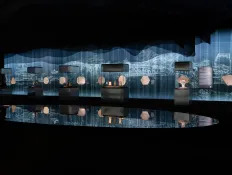
Cartier’s ‘Magical’ Exhibition In Shanghai Marks 60 Years of China-France Relations
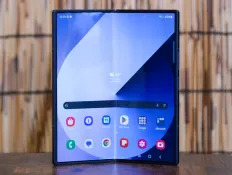
Galaxy S25’s next-gen Bixby might be able to understand context

Sportradar Beats on Q3 Results, Expresses Optimism on MLB Rights
